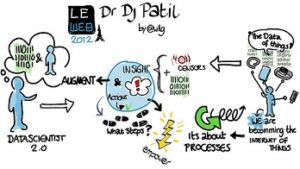Cloud and the future of digital communities October 24, 2016
I attended the GovDC Marketplace event held 15 September and I learnt a lot of things from listening to presentations, workshops and panel discussions about using cloud-based technologies from both the public sector and providers.
presentations, workshops and panel discussions about using cloud-based technologies from both the public sector and providers.
Recommendations on cloud implementations
It was great to hear the advice of cloud service providers to agencies regarding cloud implementation as it mirrors our advice on this topic. Here are some of their key recommendations:
- speak to peers about their cloud implementation experience to gain understanding of what it entails
- start with the “cloud exit strategy” which includes clauses on contract termination, determining the format of the data for export, volume and type of data, and the process of moving to another provider
- leverage the information and services provided by GovDC
- kick off with small implementation and/or with low risk process/systems
- identify the current staff skill set and what skills are needed to make the transition to cloud
- identify and assess governance, risk and compliance issues prior to going to the market – these include looking at current policies, processes and rules and re-engineering processes in the cloud environment
- evaluate the service catalogue of the cloud provider based on the needs of the agency
- check the provider’ support models, procurement models, published services, ordering and consumption/billing models.
The providers also recommended that agencies ask questions regarding “automation and orchestration processes” or the cloud service delivery – how the service is delivered to the user, its standard performance levels, monitoring of quality of services, how to set and enforce policies, etc.
Most importantly, agencies need to assess the technical capability of the cloud provider.
Becoming a cloud native government
The speakers from the event discussed the changes their organisations have planned or are undergoing to become cloud native. They also explained the benefits for using cloud native services:
- development and release of digital services are quicker, from the usual 18-month release cycles, down to 12-16 week release cycles
- continuous deployment of services
- less human intervention to detect and resolve service problems.
The concept of “cloud native” is not new, but it hasn’t reached its full potential yet, and only a handful of providers are working in this space. What cloud native means and how it affects data, records, and information management is something that we need to understand and plan for.
In the meantime, here are some of the links on the web regarding this concept:
- Is the Enterprise Ready for Google’s Cloud Native Approach?
- Cloud Native Computing Foundation
- Cloud Native Trends Picking Up – Legacy Security Losing Ground
Future of digital communities
One of the keynote presentations was regarding the fourth industrial revolution (Industry 4.0), where the future of technology is going and how it is shaping communities which are increasingly played out in the digital space.
We are on the cusp of Industry 4.0, in which information and data play an important and central role in the future. The economic value of data is yet to be fully realised, but there are businesses that aim to and/or that currently leverage the data collected from connected objects such as wearable devices, mobile phones, augmented reality and virtual reality devices, robotics, or even cars, which are examples of the “Internet of things” (IoT).
As the IoT gains momentum, some of the issues that need to be looked at are:
- data ownership and value of data (both legacy and current data sets)
- data security, including privacy issues around personal information
- data reliability
- data interoperability
- public data consumption
- up-skilling of the staff to acquire new skills and develop expertise around data.
The event certainly opened my eyes to present and future cloud technologies. It made me ponder how we are going to archive and preserve data and information, and the existing and underlying technologies for future use.


Leave a Reply
You must be logged in to post a comment.